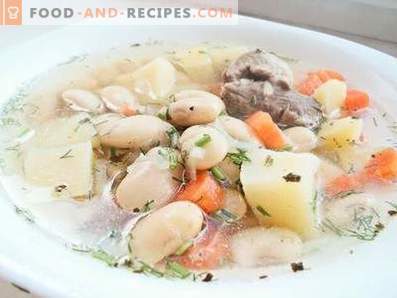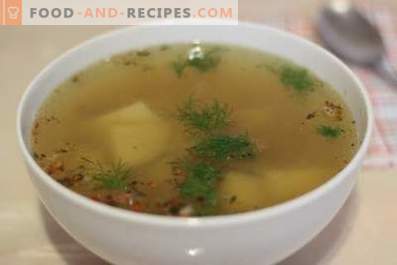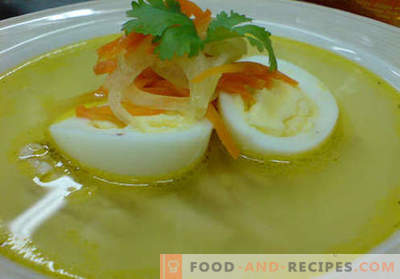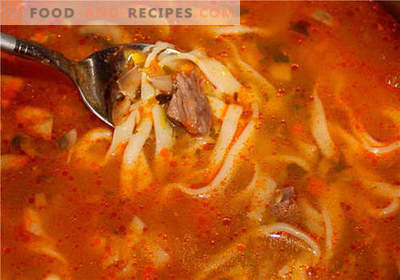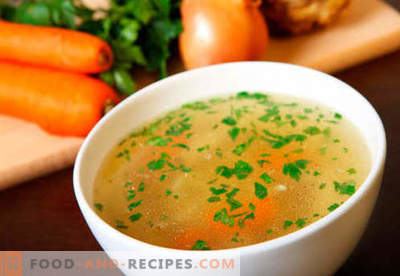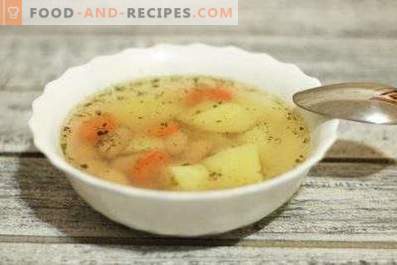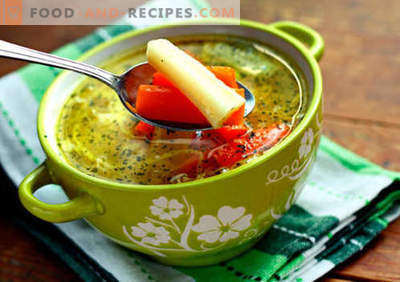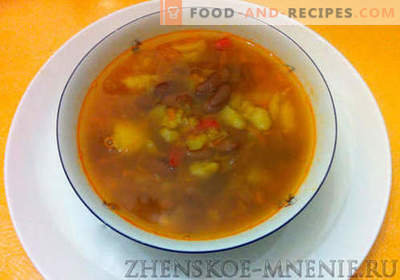
Even the most professional chef can occasionally have such a nuisance as a salty first course. And what can we say about simple hostesses? The chef can afford to cook a new dish, but the hostess, who often has a limited supply of food, and most importantly, time, from over-salted soup can come to despair. But do not be upset! The main thing, as the inimitable Karlsson said, is calm and only calm!
Do not rush to add excess liquid to the soup - this can only spoil the rich broth, which immediately dims, loses its taste and aroma. There are several simple ways to rid the soup of excess salt. All these methods are known for a long time, they were successfully used even by our great-grandmothers.
First Method
The most common, and at the same time, the most effective way to get rid of excess salt in a liquid is to add rice. Rice will not only draw out excess salt, but will also make the broth more rich. This option will help to correct the situation, even if the soup is salted in earnest.
But if the method of cooking soup does not involve the use of rice, then a small amount of cereal can be tied up in a gauze bag and dipped into broth, and after being ready, simply pull it out of the soup.
And you can do even easier - use rice, which is prepared in bags. The bag is completely immersed in the broth, and after readiness it is simply taken out by the ladle. If rice was not on hand, the same can be done with flour. But here it is necessary to consider that from flour the broth, of course, will grow dim. However, you see, it is better to muddy than salty.
Second Method
Salt can be killed with sugar - one spoonful of broth will be enough for a pan. Pleasant sweet taste is especially good in pea soup and soup. But this method is suitable only if peresal insignificant.
If there is a lump sugar, then it can be put in a ladle and dipped in broth. As soon as the sugar begins to dissolve, it is quickly removed. This procedure is done several times until the salt returns to normal. The method is complicated, but effective, as sugar perfectly absorbs salt.
Third Method
Most soups are prepared using potatoes, with which salting can also be eliminated. A large peeled potato is put into the broth and cooked until ready, and then taken out. There may be several potatoes, and after the readiness do not rush to throw them away - much more can be cooked from boiled potatoes, for example, potato salad.
Fourth method
This method is most often used by professional chefs, but why are we worse? The method consists in introducing into the liquid a small amount of acid - apple cider vinegar or lemon juice.
You need to start with a small amount - with half a teaspoon. After adding the soup should be well stirred and tasted. If peresal is not eliminated, try adding some more. Together with the acid you can add a little sugar.
How to pickle broth correctly
Everyone knows that the situation is easier to prevent than to fix. Therefore, finally, a few tips on how to properly salt the soup.
- Perezol often happens because of carelessness, when the hostess just forgets that she has already salted the broth once and salted it in the second, and even the third time. To avoid this, before salt, be sure to try the broth to taste. Alas, visually there is no way to determine salinity, so do not be lazy to try before salting.
- After salting the broth, let it boil for a few minutes, then just try. This time is necessary in order to let the salt disperse. If you try the broth immediately after adding salt, the soup seems unsalted.
- Salt broth should be tasted not from above, but from the middle of the pan. Above is usually a layer of fat, and it almost does not absorb salt, so it is easy to err and oversalt.
- A slightly cooled soup is always somewhat saltier than hot - this should be taken into account when serving the first course to the table. It is better to add a little bit, and then the not very hot soup will seem moderately salty.

